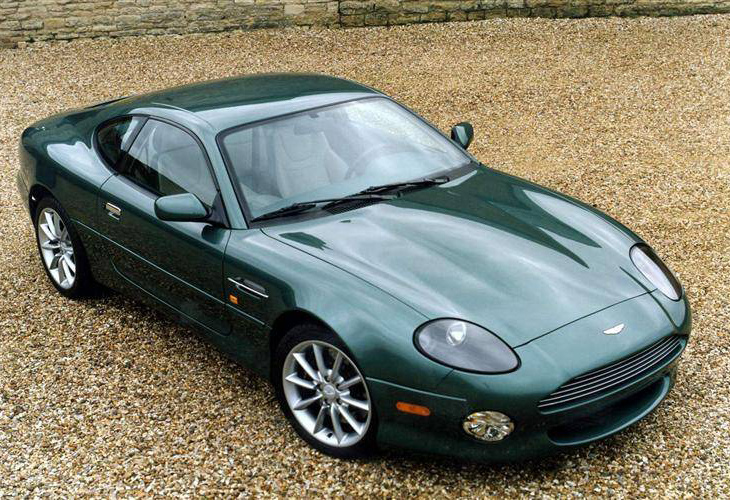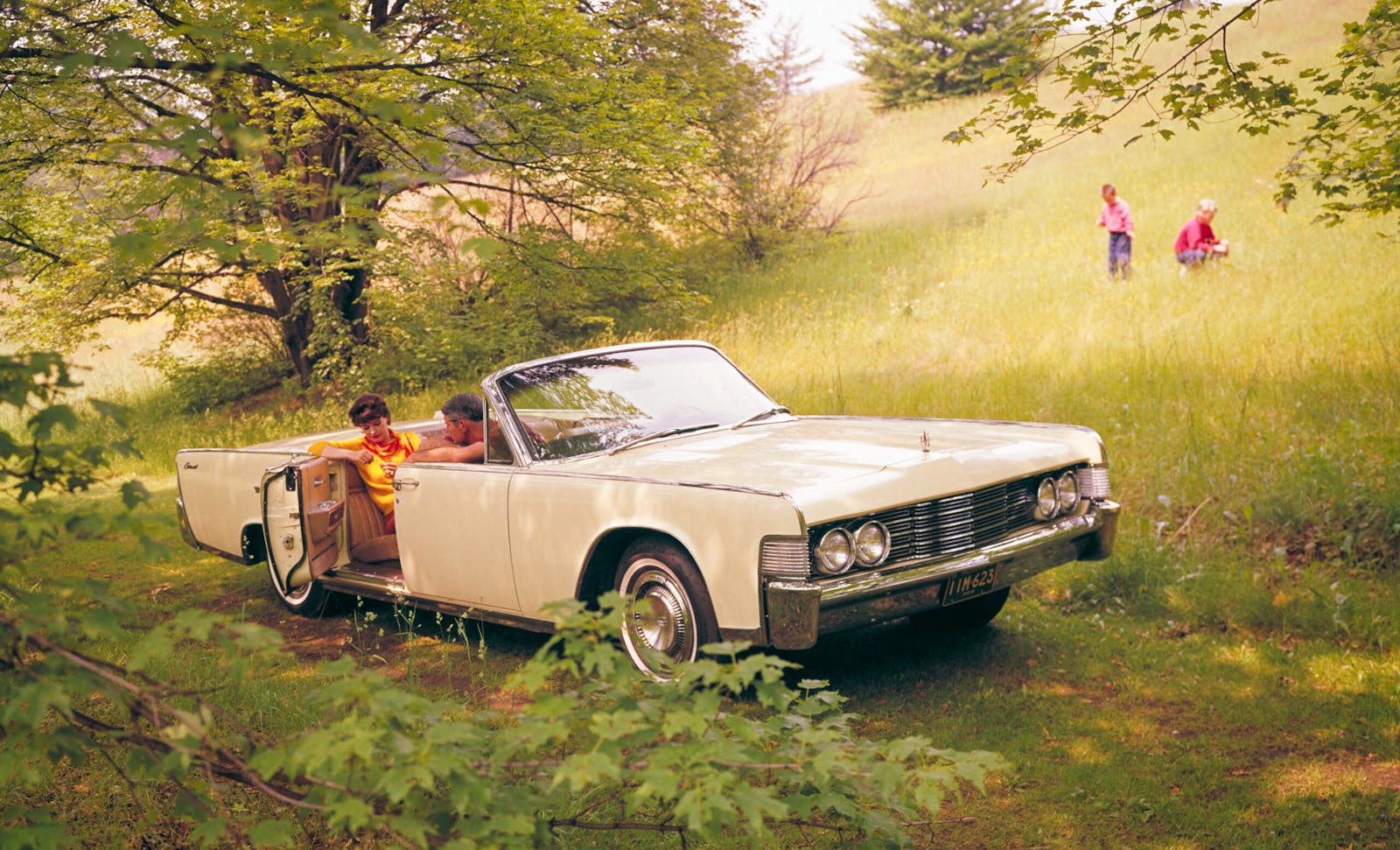Media | Articles
10 undervalued British classics
It’s no secret that vintage BMW and Porsche prices have had a strong go of it the past few years, as have many classic and modern Japanese performance cars. British car values have generally been flatter than other segments of the market. That’s a shame, because there are quite a few English vehicles out there that are rare, gorgeous, fast, interesting, or a combination of all four yet remain temptingly cheap compared to some of their rivals (even if you believe the stereotype that they are more likely to leave you stranded).
Here are 10 British cars that we think really could be worth more:
1978–81 Triumph TR8
Hagerty Price Guide value: $4100–$23,500
The Harris Mann-penned TR7, “the shape of things to come,” has been the butt of jokes for decades and came out when British Leyland was plagued by strikes and poor management. While a little goofy looking, it was also woefully unreliable and tended to overheat. Even when running right, the 2.0-liter four was on the anemic side with only about 90 horsepower to work with.
Marketplace
Buy and sell classics with confidence
Thankfully, Triumph went out on a higher note with the TR8, which fixed many of the TR7’s issues with the aluminum 3.5-liter Rover V-8. It packed quite a punch (for the late 1970s, anyway) while sacrificing little in the way of weight or handling. It earned the nickname “the English Corvette” and Road & Track commented “the only other thing we could ask for is good looks.”
The TR8 has a lot going for it in terms of rarity and performance, and the availability of eye-catching colors and plaid seats make up at least a little bit for the exterior styling. Nevertheless, the TR8 remains not that much more expensive than the TR7 ($2000–$14,300). If you want a British sports car with a (relatively) big V-8 on a budget, there aren’t really any other places to turn. A Sunbeam Tiger is pretty much the next most affordable choice, but that’s in an entirely different price bracket. Thankfully, the TR8 still usually goes for a number that most enthusiasts can afford.
1973–77 TVR 2500M
20180413173747)
Hagerty Price Guide value: $8900–$33,200
This was TVR’s first real volume model, and when the 2500M debuted at Earls Court in 1971, the company even hired two nude models to pose with the car for the press day, so it brought a lot of attention to the little carmaker in Blackpool. The “M” Series models featured Ford fours and V-6s, but the most common one in the United States was the 2500M with a 2.5-liter straight-six from the Triumph TR6. Underneath the fiberglass bodywork was a backbone-type chassis, and the whole package weighed barely 1000 kg. TVR made less than 1000 of them, although many came to the U.S.
The 2500M is an immensely fun car to drive with sharp, direct steering as well as a great noise (though not a ton of power) coming from the Triumph six up front. Despite the rarity, components aren’t all that hard to find given the parts bin nature of TVRs. But even though it’s much rarer, lighter, faster, more spacious, and arguably better looking than the TR6 with which it shares so many parts, the 2500M is not all that much more valuable than the Triumph ($6800–$36,500). And even though the eccentricities and exclusivity of old TVRs have attracted some attention in recent years with prices rising significantly, their current values still seem like a bargain considering the rarity and performance.
1982–87 TVR 280i
20171205185347)
Hagerty Price Guide value: $5200–$15,500
The styling for the TVR Tasmin series was done by Oliver Winterbottom, who also did the Elite/Eclat for Lotus and had a major part in the Esprit, but the TVR managed to look more like a doorstop or a wedge of cheese than any of them. The styling may have been a major change for TVR, but the car still used the familiar formula of backbone-type chassis with fiberglass body on top and relatively powerful engine under the hood, in this case a Ford Cologne 2.8-liter V-6.
Out of the whole Tasmin series, TVR built about 2,600 total cars, and only about 500 examples of the 280i version came stateside. Sadly, we didn’t get the Rover V-8-powered 350i. The 280i was actually the last TVR imported to the United States. Despite its low volume production and solid performance as well as the rising interest in earlier TVRs, the “wedge series” models remain seriously affordable compared to other cars with similar performance of the period. They are currently the most affordable cars with a TVR badge.
1946–52 Bentley Mk VI
20180413173542)
Hagerty Price Guide value: $18,700–$65,300
Coachbuilt cars are another story when it comes to prices, but the standard steel Bentley Mk VI represents a serious value when it comes to classic hand-built English luxury magnificence. While not the most graceful car to wear a Bentley or Rolls-Royce badge, the Mk VI is nevertheless attractive and just looks expensive. There’s a reason why they make such popular wedding cars. If you can find one free of rust with good leather and wood, it won’t cost as much to keep up with as you might think, and the purchase price will be considerably less than many other mechanically similar Bentleys or Rolls-Royces of the period.
1966–73 Triumph GT6

Hagerty Price Guide value: $4400–$19,500
The Triumph GT6 is more than just a Spitfire with a roof. Meant to take on the MGB GT, the GT6 is both quicker and better looking. Its engine is smoother, has two more cylinders, and makes a better sound, and because the GT6 didn’t sell all that well in period (about 41,000 total) it’s also considerably more rare. Despite all that, the two little coupes carry similar price tags in today’s market. Until the past year or two, the GT6 was actually cheaper than the MG.
1976 Jensen GT
20180413173824)
Hagerty Price Guide value: $3000–$16,500
Despite lots of initial promise, the Jensen-Healey wound up being a bit of a disaster and played a big part in killing off Jensen. The underdeveloped Lotus 907 engine had problems early on and ruined the car’s reputation. Jensen’s last hurrah was the GT, which the company hoped would combine the sportiness of the Jensen-Healey with the refinement of the Interceptor thanks to a walnut dash, power windows, air conditioning and optional Connolly leather. The hand-built GT cost about 10 grand at a time when a Datsun 280Z set you back $6600 and a Corvette could be had for $7600. Only about 500 were built, with roughly half coming to the United States. Despite the rarity and better equipment, the Jensen GT comes at a similar price to the much more common and less well equipped soft top Jensen-Healey. And if you’re a fan of sporty classic shooting brakes, your only other affordable choice is the Volvo 1800ES, which is worth between $8400 and $42,500.
1997–03 Aston Martin DB7

Hagerty Price Guide value: $19,200–$63,500
Yes, it will savage your bank account with every trip to the shop, and yes, the interior has some dated Ford switchgear, but the DB7 currently trades at prices that would otherwise buy you a new Mustang or Camaro and that’s worth noting. Even the nicest V-12 Volantes cost a fraction of their original six-figure MSRP, and the Ian Callum-penned sheetmetal looks a lot less dated than the interior, so the DB7 looks way more expensive than it is.
1961–66 Jaguar Mk X
20180413173709)
Hagerty Price Guide value: $7200–$31,500
The Mk X debuted at the same time as the E-Type, so it’s easy to forget that it was a major departure for Jaguar. It ditched the tall and bulky shape of the Mk 7-9 in favor of the low, feline style with four headlights that characterized Jag sedans for decades to come. The Mk X is a huge car with room for six adults, and were it not for the badge on the steering wheel, occupants could be fooled into thinking they were in a Rolls thanks to a forest’s worth of wood and fold-out tables in the back. The Mk X reportedly drives like a much smaller car, and under the hood is either a 3.8- or 4.2-liter version of the legendary XK straight-six with the same power figures as the E-Type to work with. Despite the style, performance and luxury, Mk X values are still in entry-level classic territory and have stayed there for some time.
1967–74 Lotus Elan Plus 2
20180413173731)
Hagerty Price Guide value: $9100–$33,900
A former owner once joked to me that the only reason Lotus built the Elan Plus 2 was so that you would have a nicer place to wait for the tow truck. That said, the Plus 2 is nearly as handsome as the two-seater version and has most of the performance. The Elan, after all, is one of McLaren F1 designer Gordon Murray’s favorite cars, and Car and Driver exclaimed that it “fits like a Sprite, goes like a Corvette, and handles like a Formula Junior.” The four-seater version cost nearly as much as an E-Type when it was new, but in the collector car market the two-seater is the iconic one and it will always be more valuable. If you can sacrifice a little performance and style, the Elan Plus 2 is a tempting value, especially when you compare it to E-Types and Porsche 911s of this vintage.
1990–93 Lotus Esprit Turbo SE
20180413173845)
Hagerty Price Guide value: $15,700–$44,800
The first Esprits were poorly built, even by Lotus standards, and the last twin-turbo V-8 models are still expensive, but there’s a sweet spot in the middle with the 1990–93 four-cylinder Turbo SE. With 264 horsepower on tap, the car is quick (0–60 mph in less than five seconds) and of course it has the outrageous styling, light weight, and handling that had already made the Esprit famous.
When it was new, the Turbo SE was a solid value compared against other higher end performance cars and it’s the same story when it comes to the collector market today. Compared to a Porsche 964 of the same era, the Esprit has 14 more horses and weighs less, but comes at a notably cheaper price. The Esprit also comes in at way less than an early Acura NSX despite similar on-paper performance.

